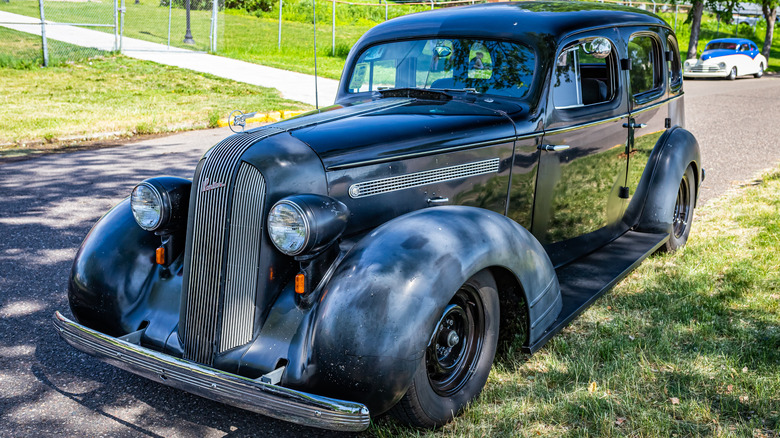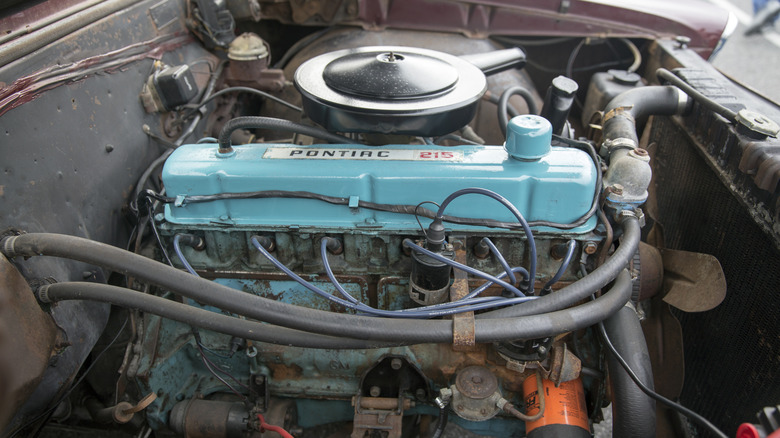What Made The Pontiac Straight-Six So Ahead Of The Curve?
The Pontiac brand first appeared under the General Motors umbrella in 1926 before declining sales led to the brand's discontinuation in 2009. Pontiac's first model was simply dubbed the "Six," named after the inline six-cylinder engine that became a stalwart in Pontiac's line until being dropped in favor of eight-cylinder options, then later revived.
The first Pontiac inline six had an L-head design and 186.5 cubic inches of displacement. By 1932, it had grown to 200.4 cubic inches and could produce 65 horsepower. Those early straight six engines used two-cylinder heads, each covering three cylinders. In 1933 and 1934, Pontiac abandoned the straight-six in favor of its new straight eight but brought the I6 back in 1935 with a new unified cylinder head. By 1949, the straight six had swelled to 239.2 cubic inches and could generate 93 horsepower and 178 lb-ft of torque.
While that horsepower number isn't tremendous when compared to modern engines, that torque output (which came at just 1,200 rpm) exceeds that of the 3.0 liter V6 that Ford used in early '90s models like the Taurus and Ranger.
Inline sixes are common today
Between 1966 and 1969, Pontiac produced a special overhead cam straight six developed by John DeLorean that came in a high-performance variant known as the "Sprint Six." Sprint Sixes went into first-generation Firebirds along with Tempest and LeMans models and topped with a Rochester quadrajet carburetor that could produce as much as 230 horsepower.
The inline six format is popular among automakers today for its simplicity, reliability, and balance. Jeep has used various I6 engines since the early 1970s, and BMW and Mercedes both rely heavily on straight sixes in their lineups. Some of the auto industry's most reliable engines are straight sixes, and Nissan used a turbocharged I6 motor in the high-performance Skyline GT-R from 1989 through 2002.
GM has given up on its latest plans to keep its straight six tradition alive, however. Last year, the nation's largest automaker announced plans to develop a twin-turbo inline-six for its lineup of SUVs and pickup trucks, but this spring, that project was scuttled in favor of inline four-cylinder and V8 engine options. Fortunately, the straight six lives on in vintage Pontiacs and modern offerings from many other manufacturers.
[Featured Image by Mr. choppers via Wikimedia Commons | cropped and scaled | CC-By 3.0 ]

